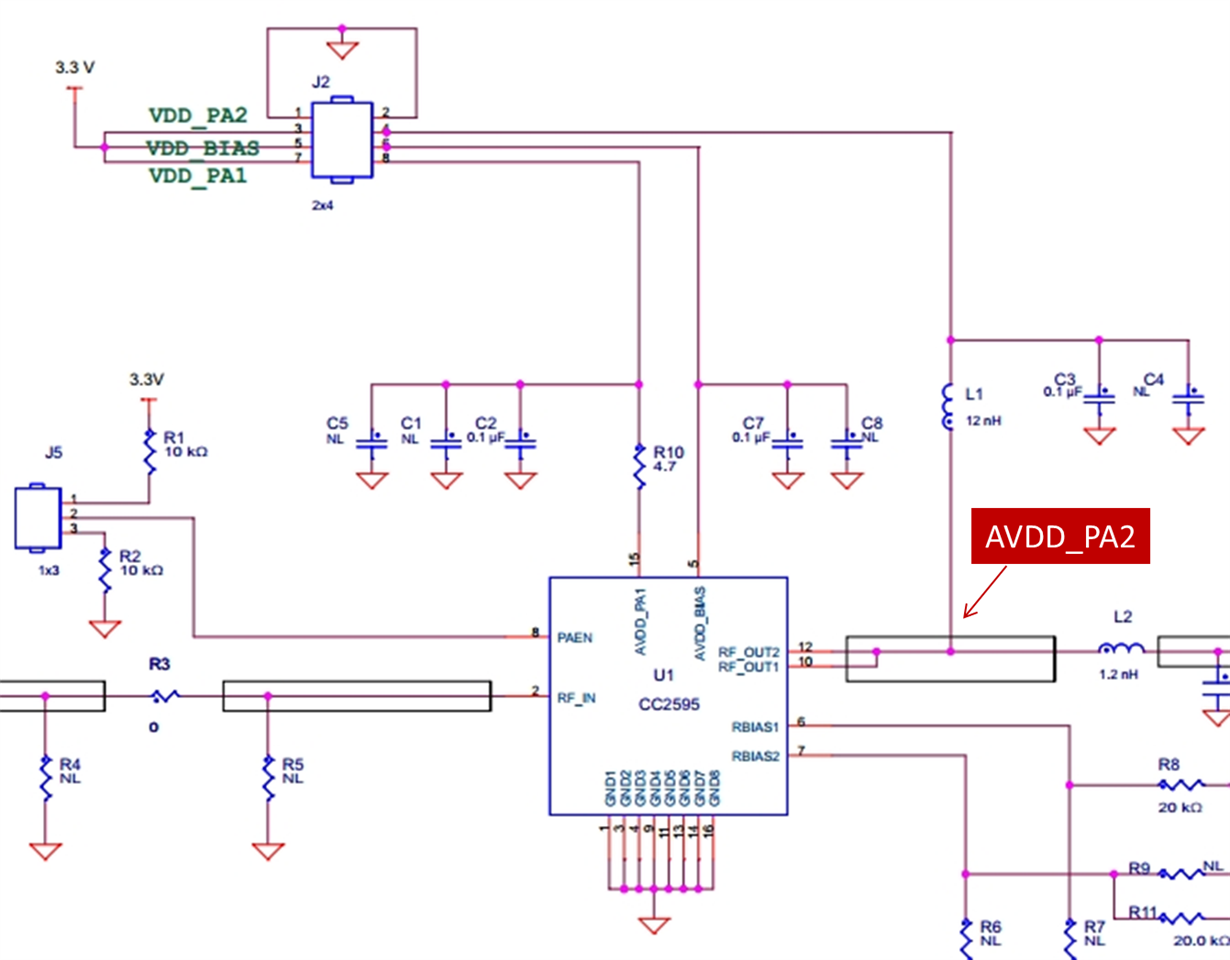Hi
We are considering a circuit like the following image.
TI's CC2595 would be used to improve output level attenuation.
The band requirement is 2.4GHz.
RF_TRX, RX switch and filter are already implemetend, so it is difficult to select other solution
(like a one chip solution), instead of existing circuit.
Questions:
1. What is the input/output impedance of CC2595?
Do you have information?
2. I think it should be needed impedance matching circuit at input/output stage of CC2595.
Is this understanding correct?
3. What is the value of RBIAS1/2?
If you have any notice, please tell us.
BestRegards



